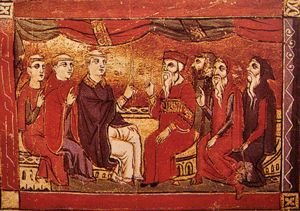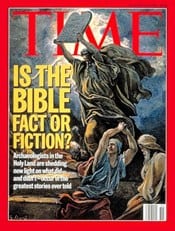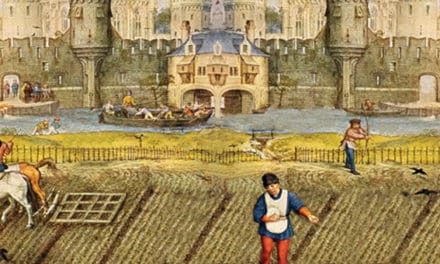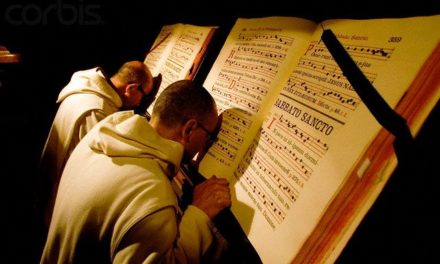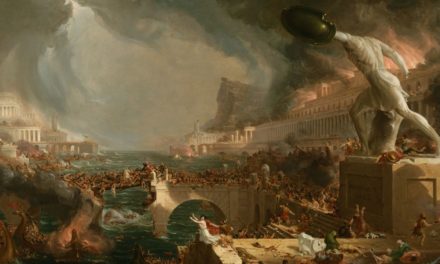This episode continues our series on the remarkable Rabban Sauma with Part 3.
In Part 1, we looked at the opening chapter in Sauma’s life. By way of a quick recap . . .
He was the treasured son of an Onggud noble family who from an early age showed a remarkable passion for pursuing the spiritual. Adept in his studies and excelling in piety, by the age 25 he was a member of the Nestorian clergy, a monk-priest. It was the year 1248.
Choosing a life of isolation rather than a monastery, he retreated from the Mongol capital at Tai-tu [later – Beijing] to the Fang Mountains where he devoted himself to study. The isolation he yearned for was often interrupted by people who made pilgrimage to his humble hamlet, seeking a glimpse, maybe a word, from the holy man whose fame was spreading. Though he preferred a life of quiet contemplation, he met with all those who sought him out.
That would have been his entire life and one we’d never have known of, were it not for one of those pilgrims, a fifteen-year-old young man named Markos. Markos didn’t just want to spend a couple days with the holy man. He wanted a mentor, someone who’d teach him everything he had to share. Sauma tried to dissuade the young man, just as his parents and others had tried to dissuade him when he was young. It didn’t take long before Sauma recognized in Markos the same zeal and dedication that burned in his soul. Three years later Marcos had proven himself devotionally sincere, academically capable and of equal spiritual mettle with his master, so he was ordained as a monk in the Nestorian church.
After a decade together in their mountain fastness, Marcos’ intellectual curiosity prompted a spiritual itch that saw the two men descend from the heights and embark on a journey of literally epic consequence. Marcos wanted to visit the scenes and sites where the Bible story had played out, as well as the birthplace and headquarters of the Nestorian church. In his studies, he read of Christians of other flavors and stripes and wanted to meet them. Nothing less than a journey to the far-reaches of the West could scratch that itch. Markos shared this dream with Bar Sauma, who was now more friend than master. It took a while, but eventually, the younger man’s hunger to discover, breathed new life on the embers of Sauma’s soul and the two decided to pursue their vision. It was 1275 when they began plans to set out, the same year Marco Polo arrived in China. They gave away what few possessions they had and headed to Tai-tu to hire guides and gather provisions. Because they’d taken vows of poverty, they had to ask the local Nestorian churches to support them. The Nestorian leaders scoffed at the undertaking. Such a venture was deemed both physically impossible and spiritually wasteful. There simply wasn’t a safe, navigable route West. And what use was it visiting the Holy Land, they wondered, when the Bible said The Kingdom of God is within us?
But by this time, both Bar Sauma & Markos were deft at waving aside objections about the arduousness of the journey. Since they already counted themselves dead and had mortified the flesh, death along the route was of little consequence. Their only ambition was to faithfully follow the path they were convinced God had set before them. Their steely-eyed focus won the Nestorian community over and they went from resistance to a hearty support for their venture of faith.
The journey they proposed would be expensive since they’d need an entire caravan. They needed guides, camels, and since camels require considerable attention to stay healthy, camel-attendants, a highly specialized trade.
Camels are able to carry between 4 and 500 lbs. Mules, their closest rival as a beast of burden can carry 250 lbs. But camels require far less water and feed. Their hooves are better suited to the sandy soil covering large swaths of the territory in Central Asia. Camels are also reputed to be able to predict sandstorms and can locate underground water. Their dung makes decent fuel for fires. But camels aren’t prolific in the progeny department, so they’re expensive. Their care & upkeep requires special training, so handlers fetch a tidy sum.
Markos and Sauma also needed baggage-handlers, cooks, & several other assistants. To give you an idea of how large a group we’re talking about, a 14th Century European handbook for merchants recommended a China-bound caravan have no less than 60 people. But Bar Sauma & Markos weren’t transporting commercial goods, just themselves and some small items to give as gifts to Western Nestorian leaders.
They might have joined a merchant caravan, but the two monks intended to spend considerably more time at places along the route than a commercial interest would be willing to.
Adding to the cost was the sheer length of time the trip would take. Six months wasn’t an unreasonable estimate. That meant buying provisions for their entire caravan, as well as paying the inevitable levies and passage fees from petty lords who fancied themselves strong enough to extort coin. Then there was the obvious need for a reserve fund, because who knew what might befall them on the way.
So, once the Nestorian community got on board with the venture, they generously supplied the needed funds. When the Mongol Court saw the seriousness with which Markos & Sauma proceeded with their plans, they decided to hop on. This was during the reign of the famous Khubilai Khan. A pragmatic ruler, Khubilai wanted to cover all his religious bases and hoped to gain the Nestorian God’s favor by supporting the monks’ trip. He gave them financial support, provided them with the all-important letters-patents that allowed them to pass unmolested across all Asia. These letter-patents were called pai-tzu in Chinese and were the forerunner of our modern passports. They not only served as evidence of official sanction from Khubilai’s throne, they were certain to provide a warm welcome among Khubilai’s allies. Even those less than friendly to the Khan would be careful to treat his emissaries with respect. For mistreating a Mongol envoy was a sure way to a lot of pain.
After Khubilai’s successful contest with his brother for the khanate, he saw it as imperative to gain the favor of as many of his subjects as possible. Supporting Sauma’s & Markos’ trip seemed a good way to gain favor with the Nestorian leaders and to recruit their scholars into his burgeoning bureaucracy. According to one account, Khubilai gave a set of royal clothes to Sauma with instructions to baptize them in the Jordan River then place them over Jesus’ burial place in Jerusalem.
So, with both Church & State backing, Sauma & Markos set off on their great adventure. We’re not sure of the exact date of their departure. It was sometime around 1276.
The guides they hired in Tai-tu took them on the first leg of the journey, then were replaced with new guides familiar with the territory they were entering.
Leaving Tai-tu, their first stop was in Marko’s hometown where the locals assumed he’d returned for good. They were delighted at the prospect the two holy men would assume the mantle of leadership in their church. They were stunned by the news Bar Sauma & Markos were headed to Jerusalem.
Their next stop was at the headquarters of two Onggud chieftains allied by marriage to the Mongol court. They also assumed their exalted position and promises of major favors would entice the monks to stay and become a part of their royal retinue. They likewise were surprised at their insistence to continue their journey. Why brave the hardships that most certainly lay ahead when a life of ease and comfort was being handed them on a gilded platter. Such appeals only offended the monks, who were affronted by the idea their devotion to God could be sold for an offer of worldly influence. At one point the Onggud chiefs were so set on retaining them, they plotted their capture. But the presence of Khubilai’s passport worried them. They realized it would be unwise to interfere in the affairs of the Mongol ruler. It seems word reached Sauma and Markos of the rulers’ earlier plans to hang on to them. So in an appeal to their mercy, they sought to load them up with exorbitant gifts of gold, silver, and precious rarities. When the monks refused, they prevailed on them to see it as a loan, and to pay it back by making a generous donation to the Nestorian Churches of the West.
They followed the Yellow River southwest along the Alashan Mountains to Ning-hsia just South of the Gobi Desert.
The route out of China was a fairly straight-forward affair since the Chinese had long before set up a system of postal stations spaced roughly every 20 miles apart along their frontier. These postal stations served a multitude of purposes. Officials stayed there in making inspection rounds. Merchants and traders were able to resupply at them. Troops stationed there kept a careful lookout on the frontier. Though there wasn’t a highway from station to station, the trail between them was clear.
That changed as the monks’ caravan left China and entered Central Asia. Here the stations ended and the trail petered out. An occasional pole or rock cairn might be seen on the horizon, but as often as not, such landmarks were washed away by floods, avalanches, & storms.
Leaving Ning-hsia, they followed the route of the Southern Silk Road just south of the dreaded Taklimakan Desert. Bar Sauma’s account includes the terse comment that this was a “toilsome & fatiguing” part of their journey. Which, knowing how austere and arduous their prior lives had been, we might use terms like “brutal & soul-crushingly exhausting.” The Taklimakan Desert has 60-foot tall dunes frequently savaged by dust storms. Marco Polo reported that travelers in this region are often separated from their mates by the opaque winds. Once alone, the bleakness and heat cause hallucinations in which people think they are being called from over the top of this or that mountain of sand. But each peak they traverse only takes them further away from the proper course.
Entering the Tarin Basin, they skirted the northern foothills of the Kun-lun Mts. To their South was India. Though Bar Sauma’s account doesn’t say so, they likely stopped for a time in the caravan center at Miran, a trade mecca that saw about as diverse a mix of cultures as to be found anywhere on the planet. Then following the Cherchen River, they embarked on a 500-mile long journey to their next major stop, the city of Khotan, one of the most renowned oases of Central Asia. It took two months for them to travel from Ning-hsia to Khotan and all during this time they only had 8 watering holes.
Khotan was a center of the white & black jade prized by the Chinese. As a result, it had become a major center of trade and a meeting place for the Far East & Middle East. Lying north of India, it became a center for the dispersal of Buddhism. A 6th Century Chinese record attributed Khotan with a plethora of Buddhist temples, stupas, monks and nuns. Khotan was so important to Chinese interests, they established military garrisons there from the 7th thru 10th Cs.
The residents of Khotan had long before used the nearby river to produce an elaborate irrigation system that produced an abundance of crops. This agricultural bonanza supported a healthy community of merchants and craftsmen who produced a plethora of goods highly prized far & wide. The bazaar boasted fine carpets, silk, and glass. Traders brought goods from Europe, China, & the Middle East, all headed in the opposite direction of their origin to be sold at steep rates due to their rarity in the market of their ultimate destination.
Khotan hosted a mixed population, with Uyghurs, Mongols, Chinese, Persians, and locals all adding to the cosmopolitan feel. Finding a community of Nestorians with which they were able to share both their faith and language, Bar Sauma & Markos spent 6 months there. The extra time they spent in Khotan is likely due both to their need for recovery from the difficulty behind them AND to turmoil in the Mongol world that made the path West uncertain.
Conflict between Khubilai and his cousin Khaidu had shattered the Pax Mongolica in the region. Khubilai’s general charged with securing the area had been captured by Khaidu’s forces, handing the Great Khan a major setback. While their letters-patent ought to have secured them safe passage, Khaidu’s treachery was a cause for concern. So the two monks decided to cool their heels in Khotan to see if things would steel down. A side trip to the Nestorian See at Kashgar sounded like a good idea. After all, visiting the center of their Faith was the whole point of their expedition and Kashgar was the home of a beloved Metropolitan. But when they arrived, they were shocked to discover the recent inter-Mongolian conflicts had left the city ransacked and depopulated. Marco Polo had visited Kashgar just a few years earlier and described the city as flourishing and prosperous.
We’ll end this episode with Bar Sauma and Markos back in Khotan, readying to set out on their westward course once more. The route was no more secure, but they determined to trust themselves into God’s hands and press ahead.

